The Carl Zeiss Planar 1,4/50 with C/Y mount is a typical representative of the 1.4/50 class
Sample Images

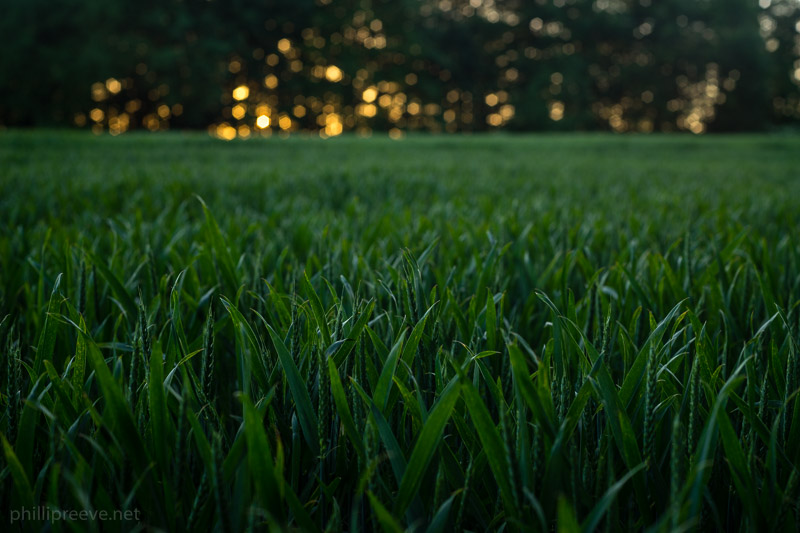
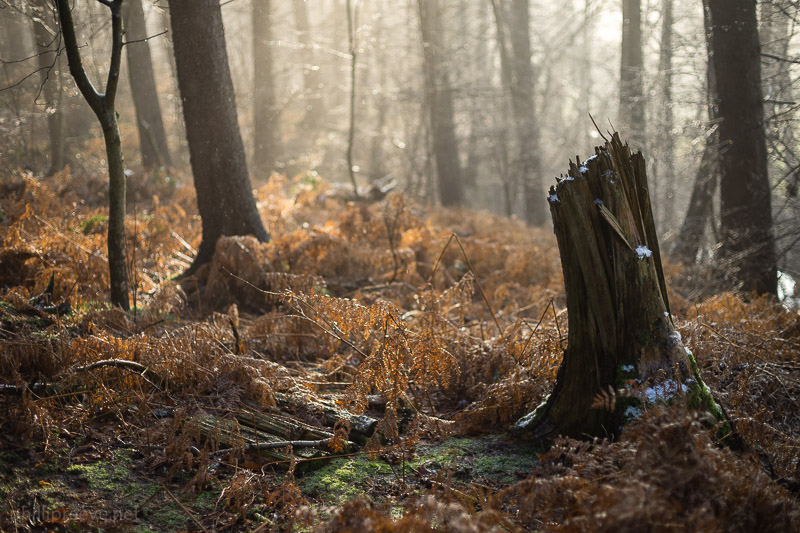
Specifications
-
- Diameter: 62.5mm
- Length: 41mm
- Weight: 290g
- Filter Diameter: 55mm
- Number of Aperture Blades: 6
- Elements/Groups: 7/6
- Close Focusing Distance: 45cm
- Mount: Zeiss C/Y
More information in Zeiss’ official data sheet.
The Carl Zeiss Planar 1.4/50 usually sells for around $190-260 at ebay.com (affiliate link).
In Germany you can buy it for 160-230€ at ebay.de (affiliate link).
The younger MM version usually sells for a little bit more than the older AE version.
Versions
There are two versions of the Zeiss Planar 1.4/50 T*.
The older AE version introduced in the mid 70’s. It will not allow program and shutter-priority with film cameras. It was made in Japan from the beginning while other C/Y lenses were manufactured in Germany before production was moved to in Japan (als called AEJ). Unlike the later MM version the AE version has Ninja-star shaped bokeh circles stopped down, see the bokeh paragraph.
The younger MM version was sold from 1984 to 2005. It can be identified by the green color of the f/22 marking. If you want to buy a younger copy look out for a serial number which starts with 8. If you want to leitax your lens to Nikon F-mount or Sony A-mount you need to buy the MM version but the process might be irreversible.
Zeiss still services the MM version but not the AE version.
Zeiss also sold the Planar to Rollei. The HFT Planar 1.4/50 with QBM mount can be bought for a little less than the Zeiss version so if you want to use it on the Sony a7 series it is probably the smarter buy but you need a different adapter. Click here for a short discussion of the Rollei lens.
Reader Johan shared this experience with us:
I wanted to alert you to a few differences between the Rollei mount and your copy. Don’t know if these apply to all qbm mount copies but:
- my copy is made in West Germany
- the aperture ring has half stops and ends at 16
- there is no evidence of saw tooth effects when stopping down (but 6 blades remain annoying!)
- the lens is missing the *T label. But flare resistance remains excellent so it definitely has good coatings!
Compatibility
The Zeiss Planar 1.4/50 can of course be used on a wide range of Contax and Yashica film cameras but I know little about those so I can’t tell you any details.
You can also buy adapters to use it on Canon EOS cameras but in some cases the mirror will hit the back of the lens. Check out this site for more information.
To use a C/Y lens on a Nikon F-mount camera you need to replace the mount of your C/Y lens. Check out Leitax for more information. I can recommend their products, they are very well made.
The easiest way to use a C/Y lens on a digital camera is to buy a mirrorless camera. I can only recommend to buy a full frame camera so the Sony Alpha 7 series cameras are your only choice (unless you have too much money and want a Leica SL). Check out this article for more information about how to use manual lenses on the Sony a7-series.
Build Quality
Build quality is superb and the lens feels very solid.
The barrel is made of metal with very low tolerances. Both focus and aperture ring are rubberized and easy to grip.
All markings are engraved
Size, Weight and Handling
The Zeiss Planar is well well balanced on the Sony a7. There are of course a bit smaller and lighter lenses but for handling the Planar is just the right size and weight.
The focusing ring travels about 110 degrees from 0.45m to 1m and a further 80 or so degrees to infinity. I think this is a very good transmission, focusing was easy at any distance. The focusing feel is quite nice: Very precise but not too smooth.
The aperture ring has full stops from f/1.4 to f/22 but it isn’t too hard to select half-stops because the focusing ring travels quite far and is well damped. I think it is one of the nicest aperture rings I have ever used, resistance is just right and every stop very distinctive.
Honestly I wouldn’t know how to improve the handling of the Planar 1.4/50.
Lens Hood
I don’t own a hood for the Zeiss Planar 1.4/50 but according to mir.com there were two different hoods: The Metal Lens Hood No.4 and the Soft Lens Shade 55mm G-11.
Since the Planar i quite flare resistant you don’t really need a lens hood.
Filters
The 55mm filter thread is made from metal
The front of the lens does not rotate so polarizers are easy to use.
Image Quality
Vignetting
At f/1.4 vignetting is significant at 2.2 stops but that is usual for a 1.4/50 lens. At f/2 it is reduced to about 1.3 stops and by f/2.8 vignetting is down to 0.5 stops which should be irrelevant for almost any application.
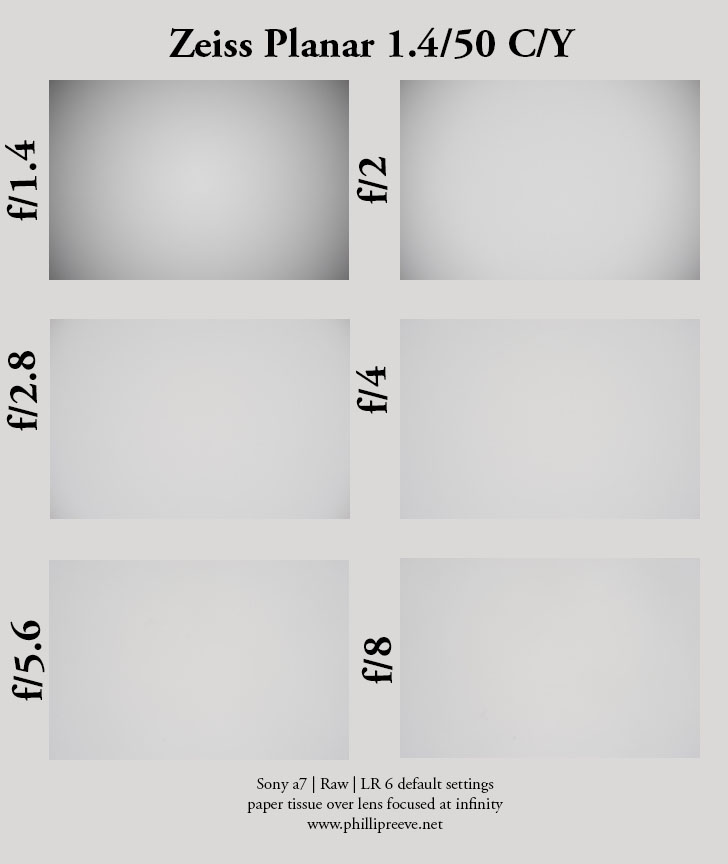
Flare Resistance
The flare resistance of the Zeiss 1.4/50 is quite good especially if you compare it to other lenses from the same era. There is only a little veiling flare which causes contrast loss and only minor ghosting in very demanding situations. This sets the Zeiss apart from many other 50mm lenses, my Minolta MC 1.2/58 is much worse and the Canon nFD 1.4/50 not much better.
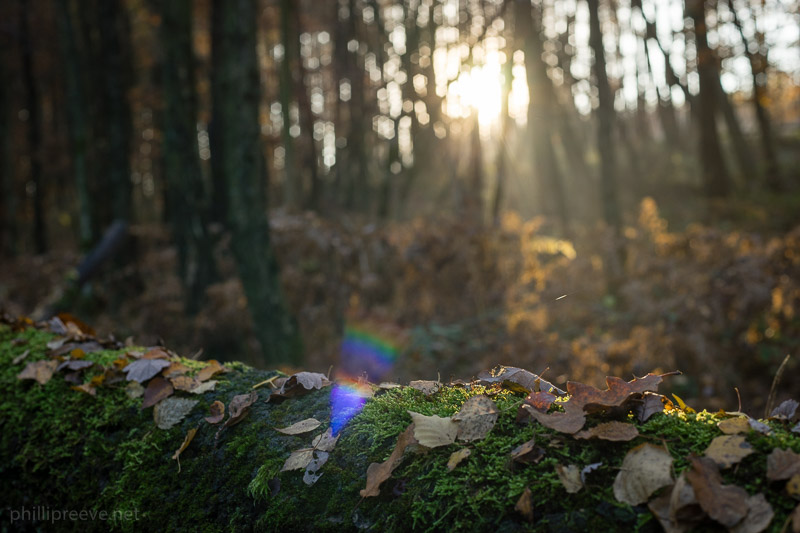
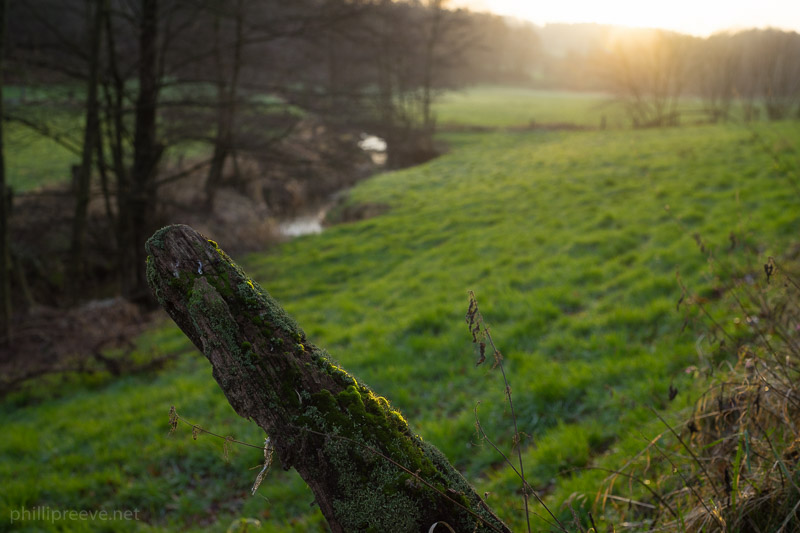
Distortion
The Planar shows some barrel distortion, a setting of +3 corrects it very well in Lightroom. This is actually more distortion than most other 50mm lenses will have.
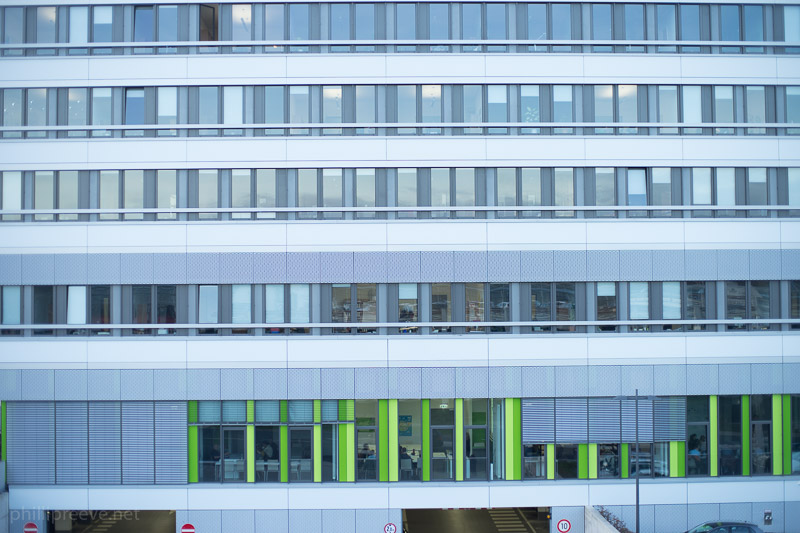
Chromatic Aberrations
I can see no lateral CA which isn’t that uncommon for a 50mm lens but very good none the less.
Bokeh
At f/1.4 bokeh isn’t very smooth, out-of-focus highlights have a well defined edge. Stop the Planar down to f/2 or even better f/2.8 and bokeh becomes quite smooth and very pleasant.

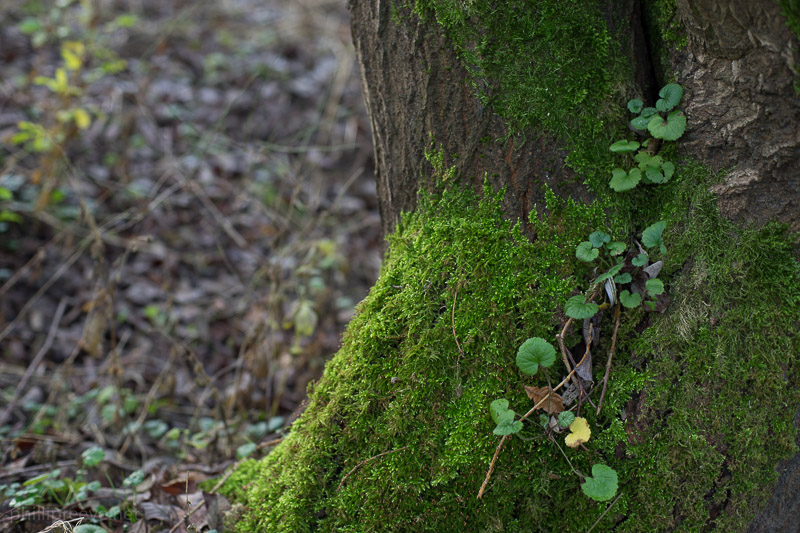
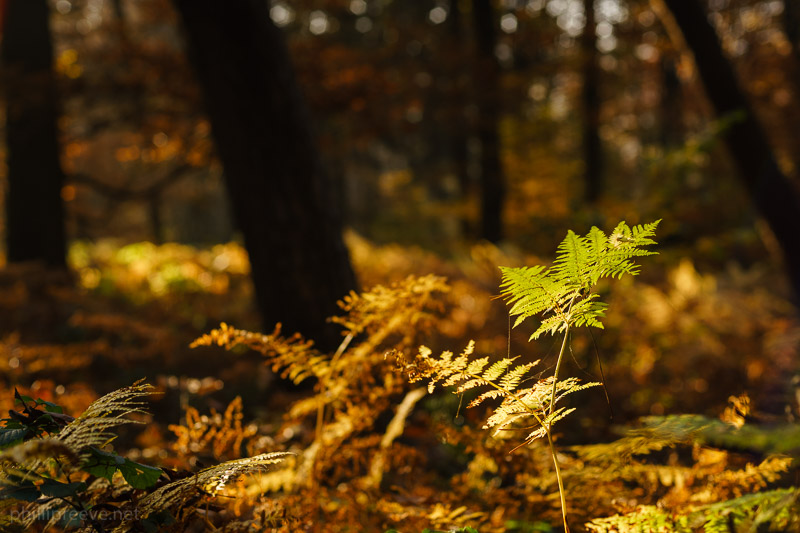
There is one catch though and that’s the aperture blades. They are quite straight and you will often see distracting hexagons in oof areas. The effect is stronger than I am used to from other manufacturers lenses.
Additionally the AE Version of the Planar can show the saw-tooth-effect at f/2 and to a very minor degree at f/2.8, by f/4 it is gone. As far as I know the later MM version has a different aperture design and does not show this behavior.
So while the lens itself has quite nice bokeh the construction of the aperture detracts from the experience.
Sunstars
if forgot to test this aspect but since the Planar 1.4/50 only has 6 aperture blades so sunstars only have 6-pointed stars which won’t be too well defined.
Contrast
The Zeiss Planar has a lot of spherical aberration at f/1.4 which reduces contrast to pretty low levels. At f/2 contrast is improved a lot to good levels and it increases a little more at f/2.8 from where it is very good.
Sharpness
The full aperture series can be found at flickr.
f/1.4: Very good resolution but lower micro contrast in the center. The midframe region is quite soft, as are the corners.
f/2: Very sharp in the center but only in the center to about r=8gmm. Midframe and corner region are quite soft.
f/2.8: The center is excellent, the midframe region improves noticeably and is now good but the outer half of the image circle is still not very sharp.
f/4: Most of the image is excellent to very good now, only the extreme corners after r= 18 remain soft.
f/5.6: Almost of all of the image shows excellent sharpness now, noly the last few pixels in the corners are a bit soft.
f/8: On a higher resolution camera you will see a very small drop in sharpness in the center, the extreme corners are a bit sharper than at f/5.6
f/11: The whole image is a bit less sharp.
The short version: F/1.4 is good enough for some portraits when you are after a less contrasty look or for night time photography, f/2 gives very good results in a small central region, f/2.8 is my go-to aperture when I want excellent sharpness in the center but the corners don’t matter an from f/5.6 you get truly excellent results across the frame, only the last few pixels are soft.
Field Curvature
As the name of the name of the lens suggest the plane of focus is very flat. Zeiss writes in their how to read mtf-curves paper that the corners after r=18mm are less sharp due to field curvature but at least on my a7 I could not confirm that. The best focus for a subject in the center was usually the best focus for a subject in the corners as well.
My testing was done near infinity at f/8.
Close Focus Performance
The Zeiss 1.4/50 has a close focusing distance of 45cm which results in a reproduction ratio of 1:8 which is average for a 50mm lens.
The Planar does not feature floating elements so performance suffers quite a lot at shorter distances. I would avoid anything under f/2.8 and for best results you need to stop down to f/8 but even then the Planar is clearly less sharp than at longer distances.
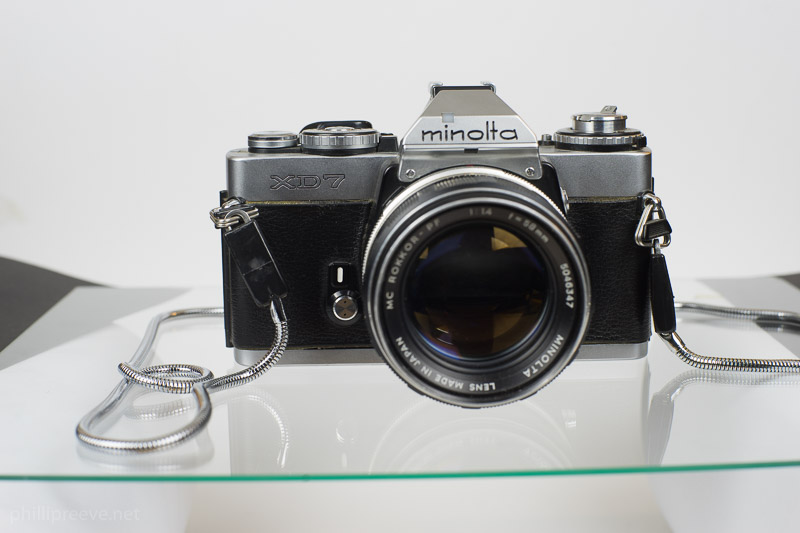

Alternatives
Sony FE 1.8/55 ZA – Optically it offers smoother bokeh without the nasty hexagons, very good corner sharpness from f/1.8 and even better flare resistance. Stopped down to f/5.6 the difference will be minimal. The Sony lens of course offers AF but the manual focusing experience sucks. The FE55 is also quite expensive at $999.
Zeiss Loxia 2/50 – Smaller, sharper and more expensive. This modern manual lens is even more pleasant to handle and my recommendation for anyone who is willing to pay good money for a very pleasant experience. It is of course a stop lower but f/1.4 isn’t of much use on the Planar anywauy. The bokeh of the 1.4/50 is smoother but the Loxia has 10 aperture blades so you won’t have to deal with annoying hexagons.
Zeiss Milvus Distagon 1.4/50 – Three times as heavy, 8 times as expensive. But you get great bokeh and sharp corners from f/1.4, flare resistance is also exceptional. Handling is a lot nicer with the old Planar.
Minolta MD 2/50 – This super affordable lens has practically zero distortion and sharper corners at wider apertures. Build quality is a bit plasticky, the benefit of this is a very low weight of just 150g. The Planar feels a lot nicer, it has more contrast and nicer bokeh.
Canon new FD 1.4/50 – The Canon is a bit sharper at f/1.4, it has 8 aperture blades and it costs about a third of what the Zeiss costs. Sharpness stopped down is very similar but the Zeiss has better contrast. The Planar feels much nicer, it has better flare resistance and it has the nicer bokeh (did I already mention that the 6 aperture blades are annoying?).
Conclusion
good
|
average
|
not good
|
The Zeiss Planar 1.4/50 T* is a very enjoyable lens and well suited for a wide range of applications.
Optically the Planar 1.4/50 is a typical fast normal lens. Wide open it shows lots of “character” which is a kind way to say that it has a lot of aberrations and is quite soft. Stop it down to f/2 and performance improves a lot and you will get sharp and contrasty images with nice bokeh as long as your subject is in the center of the image. From f/2.8 the center is excellent but you need to stop down to f/5.6 to get a very sharp image. The Planar 1.4/50 shares these attributes with many other 50mm lenses. There are three aspects where it can set itself apart from most of the competition: Flare resistance, contrast and build quality. But there are also a few less positive attributes: It has only six aperture blades which can be a distraction and it is quite abit more expensive.
Few lenses are built as well and handle as nicely as the Zeiss 1.4/50, bothe the focusng and aperture ring are among the best I have used. To me this is an important aspect of a lens, I don’t shoot for money I shoot because I enjoy the process and the end result.
I think the price is only partially justified by the performance, you certainly pay a premium for the Zeiss brand. Other 1.4/50 lenses which are very similar in performance sell for half as much.
All in all it is a versatile and capable lens which changes it’s character a lot as you stop down. At f/1.4 it displays many aberrations which can distract from your subject and while the center improves very fast you need to stop down to f/5.6 to get really excellent across the frame performance. Compared to other 50mm lenses it is very expensive but compared to many modern lenses it is still very affordable.
The Carl Zeiss Planar 1.4/50 usually sells for around $190-260 at ebay.com (affiliate link).
In Germany you can buy it for 160-230€ at ebay.de (affiliate link).
If this review was helpful to you, please consider using one of my affiliate links. I will earn a small commission on your purchase and it won’t cost you anything. Thanks!
Zeiss Planar 1.4/50 T* Sample Images
All images are processed in Lightroom from Raw. Many more full resolution samples in my Zeiss Planar 1.4/50 flickr album.

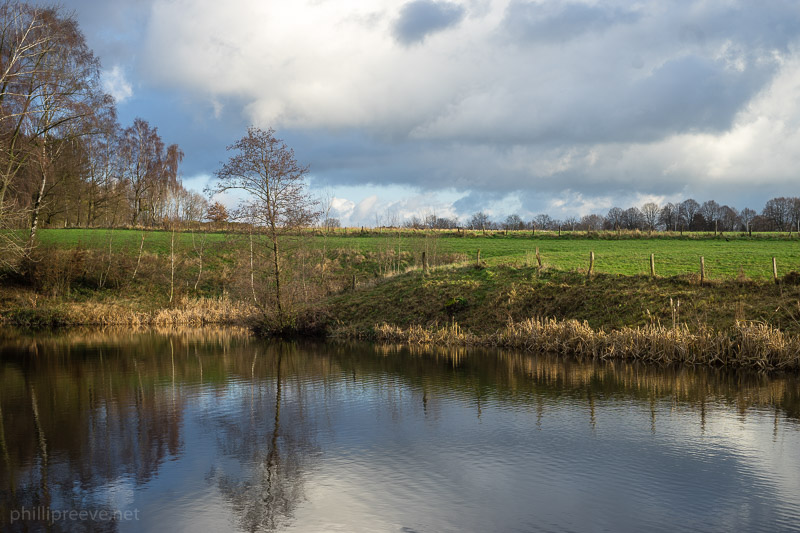
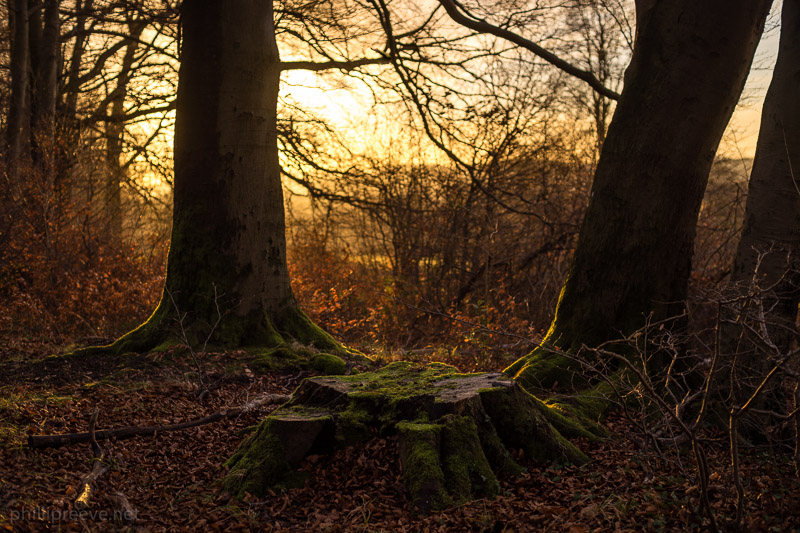
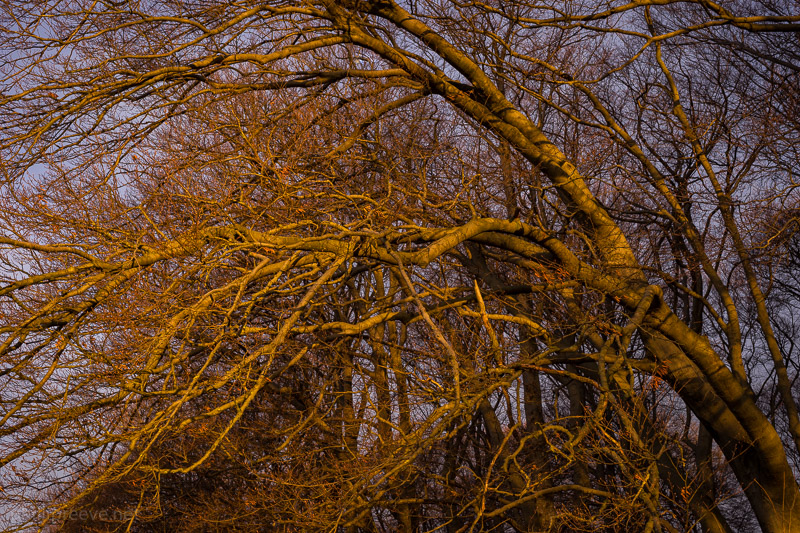
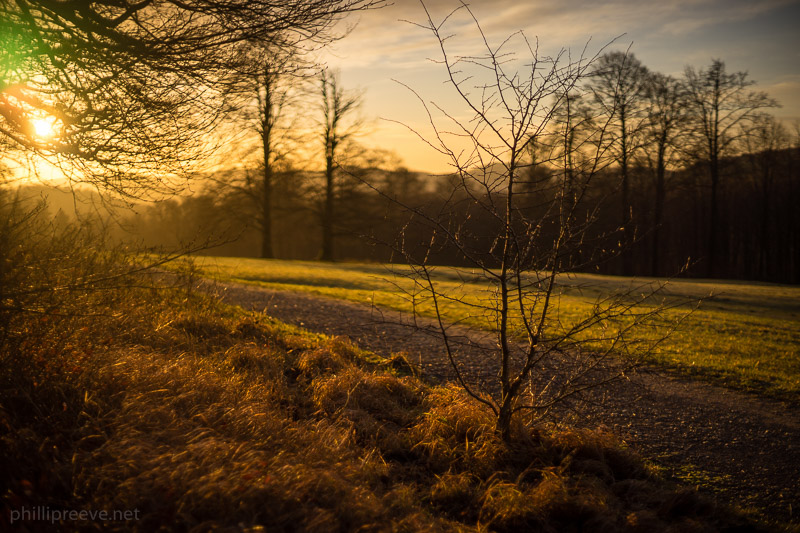
Other Articles
- My Facebook page
- Manual lenses on the Sony a7 – a beginner’s guide
- 15 affordable manual lenses for the Sony a7 series
- My other lens reviews
This site contains affiliate links. If you make a purchase using any of the links marked as affiliate links, I may receive a small commission at no additional cost to you. This helps support the creation of future content.
Latest posts by Phillip Reeve (see all)
- Review: Samyang AF 75/1.8 FE - April 12, 2021
- The FE-List now has 113 lenses on it - March 25, 2021
- 2020 – Year’s end review - December 28, 2020

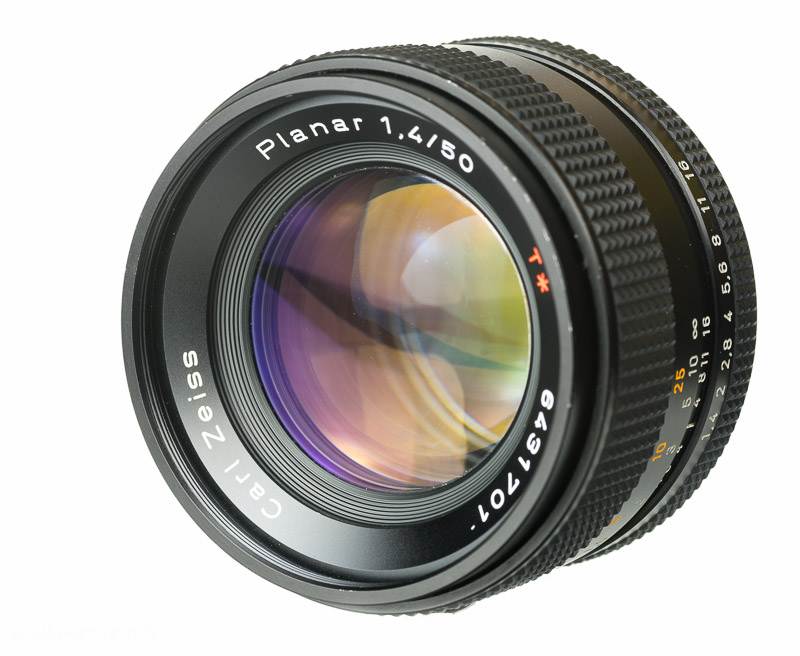
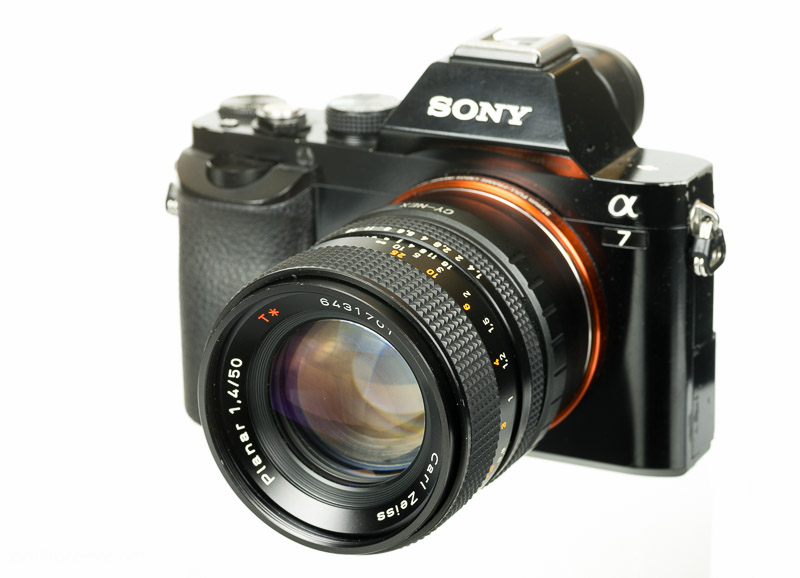
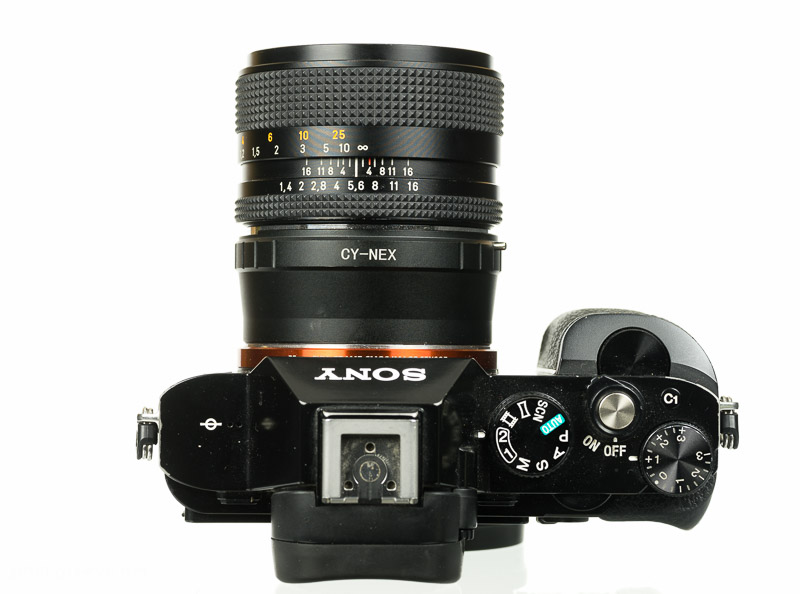
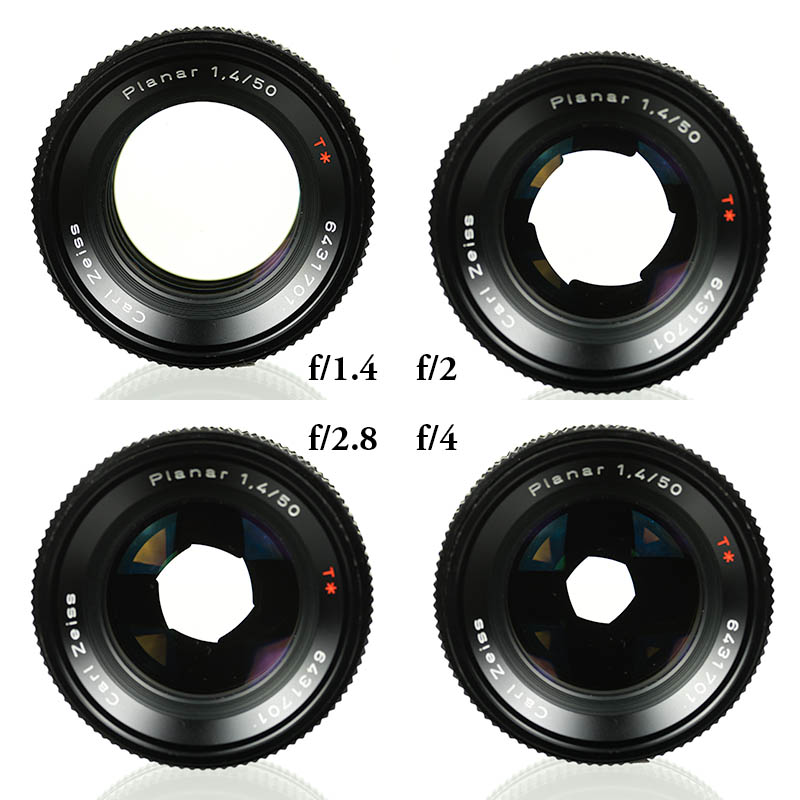

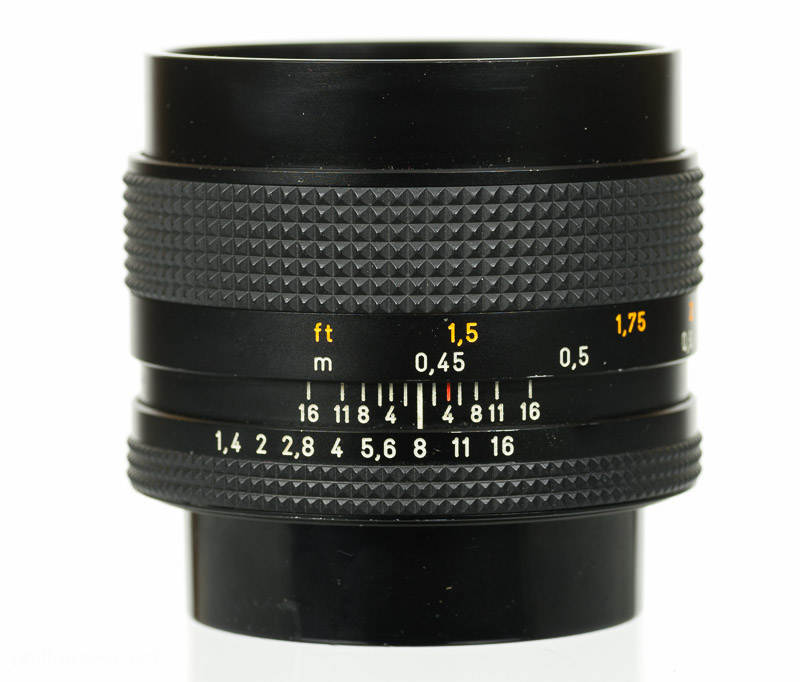
nice review, but if you review this lens, you should also review its main rival the 1,7 version!
regards reinhard
Not likely to happen any time soon 😉
Why? i have the f/1.7 MM version and also i was curious to see a comparison!
Well it takes me up to 10hours to write a review and this isn’t my job but my hobby so I can only review 2 or 3 lenses a month. Since I can only review a very limited number of lenses and I try to focus on the more interesting ones and I don’t think the Planar 1.7/50 is one of thse even though it is probably one of the sharpest 50mm lenses
I have to preface my comment by saying that I own the Planar 1.7/50
The reason I bought it back in the 1980’s is the fact that even then, there were quite a few voices out there contending that it was actually not just a better buy from a price / quality perspective but also optically at least as good if not better than the 1.4
Here is an “available light” sample shot:
https://500px.com/photo/131857483/poledancer-by-marc-contaxtonikon?ctx_page=1&from=user&user_id=5852514
I think, that the 1.7/50mm is a pretty interisting lens. It is said that the lens has worse bokeh but more microcontrast/3D-Pop than the 1.4/50mm. Maybe I will buy it somewhen and analyze it but like Phillip said, we have planned to do plenty of other lenses before 😉
Bad for you, the 1.7 Version does also have more 3D Pop. 😉 And MultiMode (MM) is better. But the build Quality is worse with the 50/1.7, because the lens is mostly plastic as body, not Metal like the 50/1.4.
I was going to say the same. The f/1.7 is a lot better then it’s faster brother. Bokeh seems to be on par with this lens here (a bit distracting wide open but gets smooth when stopped down), sharpness and contrast is astounding, plus it’s smaller and cheaper. I’d very much recommend the f/1.7 over the f/1.4.
Of course, you guys can’t test all lenses. But I think these comment fields are a great way to share experience too.
From what I have read it is sharper with more contrast at wider apertures but the bokeh isn’t as smooth. For me the great build quality of the 1.4/50 is an important argument and at f/5.6 the 1.4 seems to be a tad better as well.
I can certainly see why it is an attractive lens for many users but my list of lenses I want to review is already too long 😉
Well, as it happens I did an extensive real life comparison shoot with the Planar ƒ/1.4 T* versus the Planar ƒ/1.7 T* and I have to say there isn’t really much difference between the two. Yes, the ƒ/1.7 is a bit sharper wide open, and yes, the ƒ/1.4 has a little smoother bokeh, but all in all both are great lenses.
But judge for yourself:
https://www.flickr.com/groups/vintagebokeh/discuss/72157655783208393/
all the best
mike
Thanks for sharing your comparison 🙂
One issue I see though is that you used APS-C sensors and many normal lenses have weaker bokeh outside of the center.
Sure Phillip – but you can compare them to each other when both or on an APS-C cam…
Well, based on this lens history, the f1.7 was developed based on the f1.4 optical design. The other thing is that this variant is very flat. That doesn’t mean the lens knew we’d have 4mm filter stacks before a digital sensor. With the conversions to 1mm stacks, you can appreciate this lens better. Also, this lens is also not an average lens. It was so good, that it is still being manufactured with minor modifications (mostly to correct filter stack effect) in Nikon, Canon and Pentax versions. The fact it is still largely being sold almost 50 years after it was designed, and it is the most common focal length in the world, from probably one if not the most iconic lens company in the world (jointly with Leica) makes it seem to me that this review does not do this lens justice. Based on the review, you’d think it’s a somewhat good but otherwise unremarkable lens by today standards. It’s not. It’s beyond legendary. The revisions DO make them a better choice, but these improvement will be gone when sensor technology improves, and all the corrections to correct acuity specific to one camera maker type of filter stack will bring possibly problems if adapted to any other maker. This C/Y version will always get better anytime the sensor stack becomes thinner, and will shine again bright as soon as one doesn’t need to pay $400 for this modification but can order a model optimized for legacy lenses. It will remain the top choice and a neutral classic that doesn’t work around whatever was the current sensor filter wisdom at the time the lens was updated to compensate it.
I had a perfect copy of the 50mm 1.7 MMJ, which was superb in most conditions. Not so good at closer distances though. I let it go due the annoying MFD of only 0.6M. I have a slightly battered copy of the Planar 50mm 1.4 AEJ, which is excellent from 2.0. Sharp across most of the frame at this aperture – on a 42mp Sony A7Rii, unlike what the review says above. The flare resistance is not all that great though. The images taken with it have great acuity and microcontrast. It is also quite a bit sharper at the MFD of 0.45m in comparison to the 50mm 1.7 at its MFD of 0.6M. I have tested two other copies of the AEJ 50mm 1.4 and both were good but my sample, despite lazy aperture blades, is clearly better. It is still my sharpest lens at 5.6 and/ 8.0.
Does anyone know if this lens is radioactive?
It isn’t
I have checked two copies of the 1.4/50 and no, they’re not. It looks like thorium was already out of fashion in the late seventies, when the C/Y mount came out.
Thanks for a fine review. I can’t agree that it is only sharp in the centre at f:2.0. My copy is quite sharp across about 80% of the frame at this aperture, and that’s where I use it most.
Hi Phillip, long time reader, first time commenter. I learned photography on a Rollei sl35 I inherited from my grandfather and was recently pleased to discover that the Zeiss 50mm planar kit lens could be adapted to my new A7. Like you I have been very impressed with the results, especially flare resistance relative to other vintage 50mm lenses (I have compared to Olympus OM 50 f/1.4, which flares so much it’s basically useless in the sun, and Canon FD 50 f/1.4).
I wanted to alert you to a few differences between the Rollei mount and your copy. Don’t know if these apply to all qbm mount copies but:
* my copy is made in West Germany
* the aperture ring has half stops and ends at 16
* there is no evidence of saw tooth effects when stopping down (but 6 blades remain annoying!)
* the lens is missing the *T label. But flare resistance remains excellent so it definitely has good coatings!
A final weird issue I’ve had is that the hard infinity end of the focus ring stops short of true infinity focus when shooting wide open. Stopping down sorts this out (it’s hyperfocal infinity basically). I suspect this is caused by a ropy adapter. Have you had this issue?
Thanks for sharing your experience Johan! I have added it to the review, if that isn’t okay for you just let me know 🙂
Here’s a comparison between the QBM and C/Y Planars: https://blog.xuite.net/gengjaw.sheu/tessar/62385259-%E4%BE%9D%E7%84%B6%E6%98%AF%E5%80%8B%E8%AC%8E%E9%A1%8C+Carl+Zeiss+Planar+50mm+f1.4+Rollei+QBM%E6%8E%A5%E7%92%B0 Optics seems to be a little bit different but not by much, with similar performance. The QBM is ever so slightly wider (by ~1 degree).
I also have a Rollei copy 50 1.4 which was made in West Germany. The HFT coating was the beginning of T coating and is the same (in the case of the German copies). I had the C/Y 50 1.7 and disagree that it has better contrast/ 3D pop when used on the A7, especially at 1.7, which you can achieve due to the half stops mentioned. I kept the 1.4 and sold the 1.7 for this reason.
just bought a C/Y 1.7/50 so I can check this for myself 😉
So how do you think about C/Y 1.7/50 compared to the 1.4/50? And which one you prefer, C/Y 1.7/50 or Rokkor 55mm F1.7 Pf
I prefer the 1.4. The 1.7 might be a bit sharper at f/1.7 but it’s bokeh is annoying, build quality inferior, it doesn’t focus as close and stopped down the 1.4 is a little better.
The Minolta 1.7/55 has different qualities: The Zeiss has much better coatings and is a better landscape lens but I prefer the Minolta for Portraits and other stuff with shallow DOF.
A Zeiss Rollei lens made in Germany without any T* or HFT instantly translates to a lens being done at a Zeiss factory, by Zeiss, using the then best T* coating available suitable for small batches. The inverse is not true. There are some HFT lenses that actually…aren’t. They are T*. And the only way to know, is to know exactly what lenses lenses where done at Zeiss’s plant in Germany. I never had the issue, and it’s probably a combination of the lens focus shift. Only 2000+ designs separated I believe the 4th element and 3rd improving close focusing distance a bit, but largely reducing focus shift – something very important for the AF variants of this great family of plannars.
Question about lens coatings…
You all have now reviewed a few of the legacy Zeiss lenses (100, 50, 28) with T* coatings, as well as the native Sony FE 35, 55, 24-70, Loxio 50 & 21 with T* coatings.
First, great work!
Next: As I understand it from reading and my experience, a primary downside of legacy lenses is often the coatings – flare control, micro contrast, colors *can* suffer from lack of modern coatings. If these legacy Zeiss lenses use the T* coatings, is it the same coating as the current modern lenses? And do these coatings deteriorate over time?
I would certainly be interested in additional information, maybe a post in its own, about non-coated vs single coating vs multi-coating, and the various impact of Zeiss’ T*, Canon SSc, Nikon NIC, etc.
First: It’s not coatings alone I think the optical design also play an important role in the flare resistance. I would say that there is some difference between the T* coatings back in the 70’s and today but the difference isn’t as large as that between a single coated Zeiss lens from the late 50’s and a multi coated one from the mid 70’s.
For example the Contarex 2/50 which is single coated flares very easily and has lower contrast in general. The C/Y 1.4/50 is a huge step up, it has minor ghosting and some veiling flare but it is a little more prone to flare than the Loxia 2/50 which is surpassed by the FE55 which is very very good and flare is only a problem in very critical situations but it is surpassed by the Milvus 1.4/50 which is the most flare resistant lens I have ever used, I couldn’t get it to flare.
You may want to read this…yes, it’s almost 100 pages. But fascinating.
https://pixinfo.com/wp-content/uploads/2016/04/en_About-the-reduction-of-reflections-of-camera-lenses.pdf
In a nutshell, they provide actual examples of coated vs uncoated, and demystify when coating and multicoating made it to lenses. For Zeiss, several of their wider angled lenses started to receive MC during the 50s. And by 1972, all Zeiss lenses had multicoating (regardless of the T*/T inscription) if Zeiss itself is to be believed.
Hi Phillip,
Have any of you ever tried the Yashica ML lenses?
Do you know if they are anyway similar in performance to these C/Y?
Rgds
No, I haven’t but I would doubt that their coatings are as effective
I do. They are great, but not as good (all around) as Zeiss lenses. But since the same manufacturer did both Zeiss lenses and Yashica, both are very good. You can see the Yashica ML lenses MTFs and compare them to Zeiss, as they appear in the same lenses catalog of the time. In general, you’ll see Yashica have a lot more astigmatism. The ML series are generally some of the best for 35mm. And where it not that they had always suffered from having Zeiss as the signature line for the same mount, they may have been more appreciated. I think one day, ML may be rediscovered, and they render beautifully and are unique in some aspects. For now, no. Just get the Zeiss ones. After that, you can use ML lenses without having to suffer wondering if they are the lesser members of the C/Y family.
Very interesting review. Like many others who have commented, I have the 1.7 version (an MM version with a SN beginning with an 8). I never use it at 1.7, because I’ve discovered that the lens gets quite a bit sharper with the stop down of one notch to f2. After reading Phillip’s review, my hunch is that the 1.7 might be a sharper lens. It would be interesting to see which lens has better IQ at f8. I have quite a few 50mm lenses… Canon 50mm 1.4, Minolta MD 50mm 1.4, Several Nikon’s, the 1.2 AIS, the 1.4 AIS and the 1.8 AIS. The C/Y Zeiss 50mm 1.7 is the sharpest of all.
I just found a 1.4 50mm and got a Fotodiox Adapater. Which adapter would you suggest for a Sony A6000?
K&F is usually a good choice: http://amzn.to/2mxt98y
Hallo
Ich genieße sehr Deinen/Euren Blog und erlaube mir eine banale Frage:
Zwei alte geliebte Contax Zeiss Objektive (Sonnar 135mm / 2.8; Planar 50mm 1.4) von mir haben Staubeinschlüsse. Ansonsten sind sie top in Schuss.
Können diese gereinigt werden? Wo wäre das gut möglich ?
Danke und Viele Grüsse
Michael
Hallo Michael,
Staub im Objektiv hat in der Regel keinen Einfluss auf die Abbildungsqualität. Wenn du ihn trotzdem aus kosmetischen Gründen entfernen lassen willst, dann kann ich dir nicht direkt eine Werkstatt empfehlen. Ich war mit dem OM-Labor sehr zufrieden, der ist auf Olympus Objektive spezialisiert, hat aber auch mut meinen Minoltas und Canons einen guten Job gemacht. Alternativ frag mal bei Zeiss direkt nach. Die machen das nicht mehr selber, können aber sicher eine Werkstatt empfehlen.
Grüße
Phillip
My #5xxxxxx F1.4 C/Y Planar performs right on par with this review. The newer Z (Cosina) “chrome nose” version had arguably comparable optics, but is not nearly as well made. A pair of the most recent vintage ZF Nikon mount Planars BOTH suffered from drastic focus shift. Awful lenses, possibly defective. My favorite of those four Planars therefore, is the oldest C/Y version. (made in Japan by YASHICA???????)
A number of rangefinder Summicrons, (having a shorter nodal point) all become darker and muddier off center. Though otherwise OK, the Summicrons are not an ideal for Sony full frame mirrorless cameras. I don’t recommend these, or any other 24, 28, 35, or 75mm Leitz M series lenses. ALL that I have tried suffer off center. (Including the 35mm “Bouka King” and Summilux aspheric.
None of a wide variety of Pentax, Minolta, Olympus, or Konica lenses performs particularly well. Present day Canon autofocus 50mm F1.8 and F1.4 lenses are both a yawn. Same for that plasticky $250 Sony 50mm F1.8, E mount lens. I detest all of these.
The 50mm Nikon lenses made from 1970 to present are generally sharp, produce high IQ with low vignetting, but all suffer from curvature of field and fail to hold critical focus across the field in the “brick wall test”. Same weakness in the 55mm F1.2 AIS, and surprisingly also, the 55mm F3.5 and F2.8 AI/AIS Micros. The 45mm pancake is just awful. The newest G versions suffer similarly, but better coatings render marginally improved micro contrast/color/snap and sparkle. The old (1960s) F2 Kikkor H has a flatter field like the Planar and Summicron, but its single layer “blue” coatings cause an overall dullness and an annoying yellow/green color shift. (For $10 to $35, these are hard to beat though) All Nikon 50mm lenses (NOT the 45) are decent, but none are quite as good as the c.1975, C/Y Planar.
The modern, very pricey F1.4 Sony Planar FE (E mount) is SUPERB wide open, but not as crisp around the edges as the best 40/50 year old legacy lenses at middle stops. (F4 to F11) The $900, 55mm F1.8 Sonnar is not quite as good as the ($1300) FE Planar wide open, but still way better than any legacy glass between F1.8 and F3.5. Being (at least) as good as the very best legacy lenses between F3.5 and F11, this is arguably the very highest quality lens for Sony A7/A7r.
Aside from these two (expensive)native lenses, only two other legacy models match the C/Y Planar. These are the F1.4 Canon 50mm FD SSC, (breech mount, not bayonet) and, believe it or not, the even OLDER Canon 55mm F1.2 FL!!!!!!
No joke. The best three LEGACY lenses that I have found for full frame Sony mirrorless cameras look to be the C/Y Planar, and a pair of nearly 50 year old Canon breech mount lenses. All suffer comparably between F1.4 and F3.5, but all perform nearly flawlessly at F5.6 and F8. The FL holds the sharpest far corners, the Planar the poorest. (but we’re really splitting hairs here) The FD SSC vignettes the most, the Planar and FL comparably less. The Panar might possibly have slightly higher overall middle stop IQ than the FD, and maybe a tad higher contrast overall than the FL. Again, we’re really splitting hairs. Somehow, I can’t help but suspect that the Fl has ever so slightly higher overall IQ than the Planar. That heavy, black anodized aluminum boat anchor of a lens is just so unwaveringly CRISP all the way across the field. Or maybe the other way around. Comparing them directly in carefully set up side by side tripod shots, the Planar and FD are actually quite hard to tell apart at any F stop. Bottom line: I just can’t determine which of these three is the best, and believe me, I’ve nearly worn out the shutter on my A7r trying! Questions? Contact me at MPZPHOTO@Yahoo.com.
I wonder you didn’t mention the Nikon 50mm 1.2 Ai-S.
While I don’t like its wide open performance, stopped down (already at f/2.0)
it renders details with a beautiful crispness rarely found in lesser lenses.
Yes, I have used the 1.2 AIS and agree with your positive assessment. Mostly. Like all multi coated Nikon 50’s, it had curvature of field issues. Out of focus corners in the brick wall test at widest apertures. Only stopping down to gain depth of field cures this. the copy I tried, (mint condition) was also softer on one side than the other. On most normal subject matter, this will not even be visible. But try photographing that brick wall, or any other flat, detailed subject, and see what happens. Overall IQ was more or less on par with the Canon 1.2 FL though. No easy achievement.
interesting to note is that the qbm versions have filter size 49mm, the according barrel is kind of narrowing down to achieve that. this applies to both the rollei-branded version and the zeiss version, also both are branded hft, with a little brighter orange-red letters on the zeiss one.
great review, btw., and especially big thanks for noting the softness at short distances! this drove me crazy, thinking my lens is broken, until i read your comment on that.
all the best!
also to note, there is no saw-tooth effect on my lens (Carl Zeiss HFT branded qbm mount)!
thanks for letting us know 🙂
Hello, I have a Mintola MC Rokkor-x 50mm f/1.4 and I was wondering if it is worth it to switch to this Zeiss 50/1.4. I’m really curious to know if the T* coating is really that good. Thank you for providing theses reviews. Looking forward to more!
It is quite a bit better but as you see in the samples not perfect.
this is an amazing review! I’ve searched all over the net and can’t find any better information about this lens 🙂
I bought the older C/Y model on ebay and found that the adapter i got is completely useless. apparently adapters with glass element degrade quality and in this case all photos come out blurry and glowwy. so still looking for that Nikon F mount adapter 🙂
just noticed you referenced http://www.leitax.com/Zeiss-Contax-lens-for-Nikon-cameras.html but seems like they specialize with the younger MM mounts? still searching for a
There is no adapter without glass element for Nikon F-mount. Leitax is the only way and you need the MM version for that.
ahhh so the MM version is compatible???
and what about this one ?
https://www.ebay.com/itm/Macro-Contax-Yashica-C-Y-Lens-to-NIKON-F-MOUNT-Adapter-D4-D90-D800-D5200/181733077350?hash=item2a5022b166:g:WIYAAOSwOdpX1mmd
After reading the above I would like to mention the 1.8/50 Planar QBM, which is one of the cheapest old West Zeiss lenses, and probably the most balanced (old) Planar lens (colors, 3D rendering, bokhe, and sharpness). I have the 1.4/50 and the 1.8/50, both Carl Zeiss QBM made in West Germany, of these two I clearly prefer the 1.8/50. However, I do not use any of the lenses very often. Biotar 2/40, 2/58 and Pancolar 2/50, are my preferred Planar (about) 50mm design, colors and bokhe are better than the younger designs, and the lower contrast of these lenses preserve far more shades and allow for much greater contrast in the subject, (if I need more contrast, I just pull it up i the Adobe raw converter). All of this is of course only my humble, and absolutely subjective opinion.
Hey. You wrote that MM with green f / 16 starts with serial numbers 8, and I have 74 … does that mean that something was buried in my copy?
You misread: MM copies which start with an 8 are younger but not all MM’s start with an 8.
Uff 😉
Hey Phillip,
thank you so much for your this review. I actually bought this lens because of it. your review is very fine and detailed, and since I’m shooting quite often against the sun or other lightsources It was important for me the it has a good flare resistance. something is now pretty strange with the K&F adapter I encounter light beams from the corners in the image. I can’t properly tell if it’s the adapter or not, but its very obvious… I can also send you some pictures, so you know what I mean… do you think its the lens or the adapter?
it really looks like reflections from the adapter actually… but it encounters really often.
I think a reasonable first step would be to modify your adapter: Link
perfect, your recommendation was totally helpful!
Interesting review. I have owned this Contax / CZ lens for 30 years and generally love it and use it on my Canon 5D2 and will use it on my new Sony A7iii.
There is this recent addiction in the last 5-7 years to attempt to make a perfectly round aperture that is getting out of hand. As for my tastes, I actually like, prefer the 6 blade sawtooth aperture effect at night. Who says that a perfectly round pattern is right? Did one ever think that Zeiss had a reason for this blade design, like making the botheth better for instance by combining an amalgamation of the smaller and the subtle ‘wider’ openings in the sawtooth openings for a creamier background out of focus ? I quite like it.
The very expensive cine cooke lenses ($10-20,000) from Britain have a really wierd multi sawtooth aperture design that flies in the face of the current trend. These are highly prized and sought after in the movie making world and are found in many $100M Hollywood movies – so why do the directors of photography insist on them if this round thing is so important. Maybe it is not. Maybe the sawtooth has a beauty all of its own. I think so.
I don’t know where this idea of a perfectly round aperture is mandated. I liove the 6 sided gorgeous effect, so I try to get my shots as wide open as possible – at least 4 or wider.
In regards to lens flare, again, getting rid of it is not such a good idea as the splashes of hexagon colored lights adds colour, soul, personality, depth and a burst of delicious jewels to often sterile so called perfect images. What is wrong with that? The combination is a beautiful image and I deliberately seek to put in the lens jewels – in day stopped down to get a series of delicious orbs and at night to get the sawtooth lights in the back ground. Gorgeous in all ways.
We live in a world of pixel peeping, insane addiction to resolution, sharpness and so called perfection as if that is going to make the photographers work better. Sure it looks good and leaves the viewer saying ‘that is nice’. But a great story, a loving portrait with soul and heart , even mildly out of focus, with the splashes of color and the night sawtooth effect takes the gold every time. And this 50 delivers.
I love such detailed feedback from so many users. Your report is very detailed, of course. I have several Zeiss lenses in the QBM mount for the Rollei SLR system. The 50/1.4 is one of my favorite lenses.
Hi Phillip,
I like your reviews. Between 1983-2006 I took >3,000 slides and some negatives with my Contax 139 and the 50/1.7. Unfortunately 1-2 years later I sold this camera and the lens. Some weeks ago I read several interesting articles about these 40 years old lenses. Your detailed 50/1.7 test motivated me to buy this lens with a Novoflex adapter for Sony E-mount on my A6000. Now I understand why I could made fantastic pictures with that lens for 23 years. The 50/1.7 became my best lens at 50mm which is better than my A-mount lenses Sony 50mm 2.8 Macro and anyhow my zooms Sony 16-80 CZ and Sony 16-50 2.8 on my Alpha 68. I became curious about the 50/1.4, bought one and did some comparisons under different conditions with the 50/1.7. Both lenses show no difference at f1.7. But from f2.0 the 50/1.4 shows higher micro contrast i.e. looking to grass. On top at f2.0 the axial CA at the 50/1.4 is nearly gone, not so with the 50/1.7. From f2.8 both lenses show similar IQ – besides the detail contrast which is higher with the 50/1.4.
I will keep both lenses.
I know this is an old thread but I’m confused about the ‘green marking’ for f22 as the Planar 50mm f1.4 only closes to f16….
please , i need help, is this lens different or renders differently than the zf version which is nikon mount advertised and sold on ebay? than i saw zf and zf.2, than i saw adapters from c/y to nikon f mount for 45 euros for sale, if the lens is c/y – those cant focus at infinity if i use adapters, or have some other missing features?…i really need clarifications, nowhere i can find
What camera do you want to use this lens on?
I am noticing a midframe dip in my test at about 1m distance from a flat subject. Maybe it is my copy of course. I tried all the apertures, focusing on the center et every f stop. Compared to other lenses, such as Canon FD 50 1.4, the Planar competes well in the middle but the midframe is much worse. At 1.4 up to about f2 the edges are better than a portion of midframe. The situation gradually inverts, as the center and the midframe keep improving towards f4, the edges become worse, until the depth of field is big enough to compensate at f5.6 and above. At f8 there is good sharpness corner to corner. So there is combination of field curvature and midframe dip. Maybe this characteristics make the images unique, especially the transition towards bokeh/out of focus zones.
this is my stuck in 1.4 lens where i dont need sharpness but i do want that contrast that for some reason my minolta 50 md1.4, yashica 45 1.7 and yashica 50mm f2 doesnt have wide open. its just enough sharpness for 1.4 portraits. that said for its usage, yall dont really need to buy a mint copy unless youre a collector.